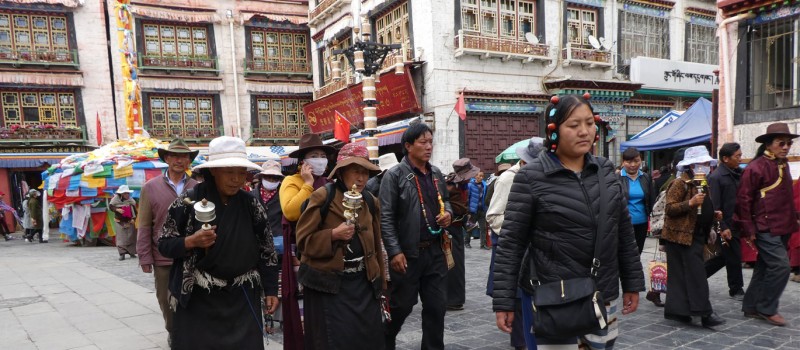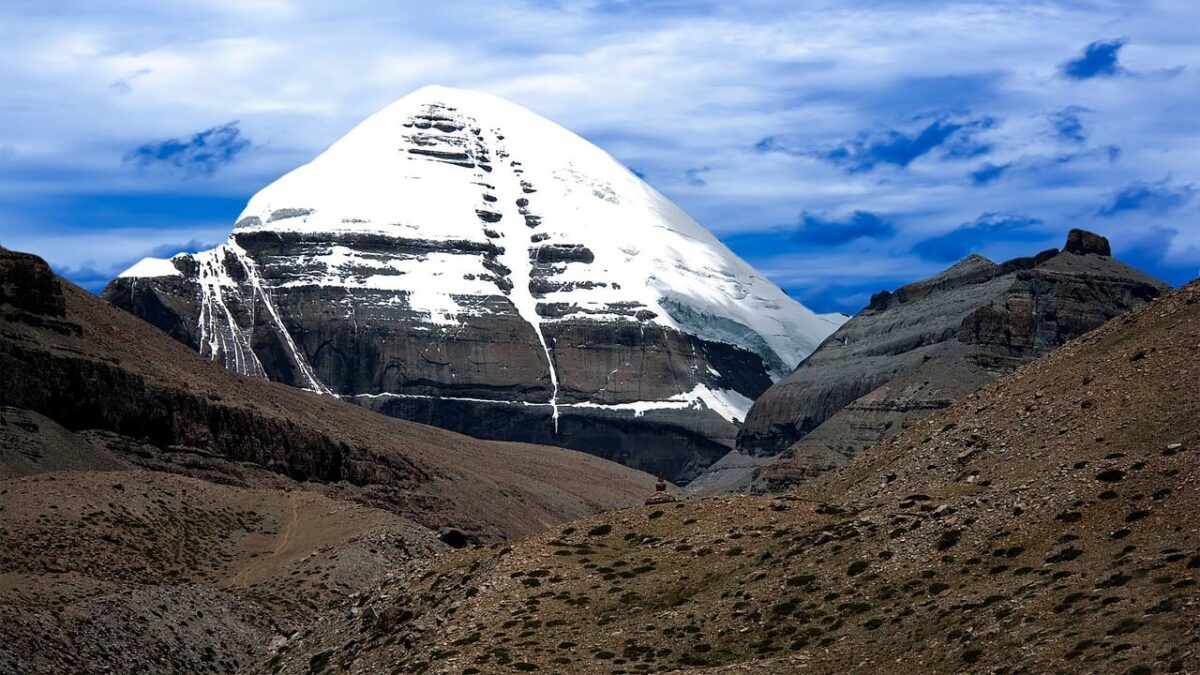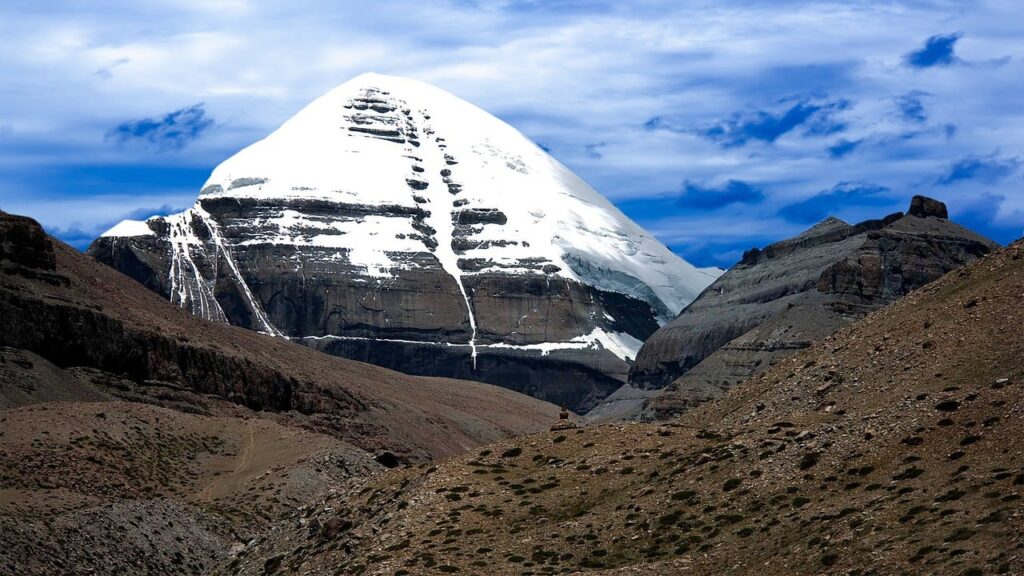Tibet, often called the “Roof of the World”, is a land of breathtaking landscapes, ancient monasteries, and profound spiritual experiences. Planning a trip to this mystical region requires careful consideration, but the rewards are immense. This comprehensive guide will help you navigate the intricacies of planning your Tibet tour.

When is the best time for the Tibet tour?
Tibet experiences a harsh climate with cold winters and relatively mild summers. The best time for the Tibet tour is from May to September when the weather is pleasant, and the landscapes are in full bloom. However, this is also the peak season, so expect larger crowds and higher prices.
- April-May: Spring brings blooming flowers and clear skies, making it ideal for photography.
- June-August: The summer months are pleasant with warmer temperatures, perfect for exploring.
- September-October: Autumn offers stunning fall foliage and comfortable weather.
- November-March: Winter brings freezing temperatures and heavy snowfall, making travel challenging.
Cost of a Tibet Tour
The cost of a Tibet tour varies significantly depending on several factors:
- Duration of the trip: Longer trips naturally cost more.
- Group or private tour: Private tours are generally more expensive but offer greater flexibility.
- Accommodation: Luxury hotels will increase the overall cost.
- Transportation: Flights, trains, and overland options have different price points.
- Activities: Optional activities like trekking or rafting add to the expense.
Expect to spend anywhere from $1,000 to $5,000 or more per person for a standard Tibet tour.
Private Tibet Tour vs. Group Tibet Tours
- Private Tibet Tours: Offer complete flexibility, allowing you to customize your itinerary. You’ll have a dedicated guide and vehicle, providing a more personalized experience.
- Group Joining Tibet Tours: Generally more affordable, with fixed itineraries. You’ll meet fellow travelers and share the experience.
Essential Tibet Tour Itineraries
Here are some popular itineraries to inspire your planning:
- Classic Lhasa Tour (4-7 days): Explore the Potala Palace, Jokhang Temple, Barkhor Street, and surrounding monasteries.
- Lhasa to Everest Base Camp (8-10 days): Combine the cultural richness of Lhasa with the breathtaking beauty of Mount Everest.
- Mt. Kailash tour and Lake Manasarovar Pilgrimage (15-21 days): Embark on a spiritual journey to the holy mountain and lake.
Difficulty Level of Tibet tour
Tibet is a high-altitude destination, and acclimatization is crucial. While most tours stick to lower altitudes, some treks and pilgrimages require good physical fitness.
- Lhasa: Relatively easy, suitable for most travelers.
- Everest Base Camp: Requires moderate physical fitness due to altitude.
- Mt. Kailash Kora: This demanding trek, is suitable for experienced hikers and pilgrims.
Essential Tips for Tibet Tour
- Obtain necessary permits: A Chinese visa and a Tibet Travel Permit are mandatory.
- Acclimatize gradually: Spend a few days in Lhasa before venturing to higher altitudes.
- Pack warm clothing: Even in summer, nights can be cold.
- Drink plenty of water: Stay hydrated to combat altitude sickness.
- Respect Tibetan culture and customs: Dress modestly when visiting religious sites.
- Be prepared for limited amenities: Some areas have basic infrastructure.
By carefully considering these factors and planning, you can embark on a truly unforgettable journey to Tibet.
Accommodation during the Tibet Tour
Choosing the right accommodation in Tibet is crucial for a pleasant stay. While options might be limited compared to other tourist destinations, there’s a range of choices to suit different budgets and preferences.
Types of Accommodation
- Hotels and Guesthouses: Lhasa offers a variety of hotels, from budget-friendly options to luxury accommodations. Outside of Lhasa, guesthouses and homestays are more common.
- Monastery Guesthouses: For a unique experience, consider staying in a monastery guesthouse. These offer simple accommodations and a chance to immerse yourself in Tibetan culture.
- Camping: If you’re an adventurous traveler, camping is an option for some tours, particularly those involving trekking.
Factors to Consider During the Tibet Tour
- Location: Staying near the Potala Palace or Barkhor Street in Lhasa is convenient for sightseeing.
- Amenities: Consider your needs: Wi-Fi, hot water, and comfortable beds are essential for many travelers.
- Budget: Set a budget for accommodation and choose options accordingly.
- Altitude: Higher altitudes might have limited amenities, so be prepared.
Tips for Booking Accommodation
- Book in advance: It’s advisable to book your accommodation well in advance during peak season.
- Read reviews: Check online reviews to understand the quality of the accommodation and services.
- Be flexible: Be open to different options, as availability can vary.
Accommodation Challenges
- Altitude: Some accommodations might experience fluctuations in temperature and water supply due to altitude.
- Limited choices: Outside of major cities, options might be limited.
- Basic amenities: Don’t expect luxury standards in all places.
By carefully considering these factors, you can find comfortable accommodation that enhances your Tibet experience.
Food during the Tibet Tour
Tibetan cuisine offers a unique blend of flavors influenced by the harsh Himalayan climate and Buddhist traditions. While not as diverse as other regions, the food is hearty, nourishing, and often surprisingly delicious.
Staple Tibetan Foods
- Tsampa: Roasted barley flour, often mixed with butter tea, is a staple food for Tibetans.
- Yak meat: A common protein source, often served in stews or dried.
- Butter tea: A salty tea made with yak butter, popular as a beverage and a meal accompaniment.
- Momos: Tibetan dumplings filled with meat or vegetables, similar to Nepalese momos.
Tibetan Dining Experience
- Simple and hearty: Tibetan food is generally simple and focused on providing warmth and energy.
- Vegetarian options: While meat is common, vegetarian dishes are available, especially in monasteries and larger towns.
- Dining etiquette: It’s customary to offer food to the eldest person first as a sign of respect.
Challenges and Tips
- Limited choices: Outside of Lhasa, dining options might be limited.
- Altitude sickness: Some travelers might find the rich, buttery nature of Tibetan food difficult to digest at high altitudes.
- Vegetarian options: While available, they might be limited in some areas.
Food Safety
- Hygiene: As with any travel destination, pay attention to food hygiene and choose reputable restaurants.
- Water: Drink bottled water or boiled water to avoid waterborne illnesses.
Tibetan cuisine offers a unique culinary experience. While it might not be as diverse as other cuisines, it is undeniably authentic and satisfying.
Transportation during the Tibet Tour
Tibet offers a unique transportation experience due to its remote location and challenging terrain. While options might be limited compared to other destinations, there are several ways to explore this enchanting region.
Major Transportation Options
- Train: The Qinghai-Tibet Railway is a modern marvel, offering stunning views of the Tibetan Plateau. It connects major cities like Beijing and Shanghai to Lhasa.
- Plane: Lhasa Gonggar International Airport connects Tibet to major cities in China and Nepal. It’s the quickest way to reach Tibet.
- Bus: Buses are available between major cities in Tibet, but they can be uncomfortable due to high altitudes and long distances.
- Car: Most tourists opt for private vehicles with drivers arranged through tour operators. This allows for flexibility and comfort.
Challenges and Considerations
- Altitude: High altitude can affect travel, especially for train and bus journeys.
- Limited options: Outside of major cities, transportation options are limited.
- Road conditions: Roads can be challenging, with potential landslides and road closures.
- Travel permits: Foreigners must obtain specific permits to travel within Tibet, which can be arranged through a tour operator.
Tips for Travelers during Tibet Tour
- Choose the right option: Consider your budget, time constraints, and desired level of comfort when choosing transportation.
- Acclimatize: If traveling by train or bus, allow time for acclimatization to high altitude.
- Pack accordingly: Bring necessary items for comfort during long journeys.
- Book in advance: Especially during peak season, book train and flight tickets well in advance.
Transportation in Tibet offers a unique adventure. You can enjoy a smooth journey through this extraordinary land with careful planning and preparation.
Packing Tips for the Tibet Tour
Packing for Tibet requires careful consideration due to the high altitude, unpredictable weather, and cultural sensitivities. Here’s a comprehensive packing list:
Clothing
- Warm layers: Down jacket, fleece, thermal underwear, sweaters, and warm hats.
- Waterproof gear: Raincoat, waterproof pants, and gaiters for unpredictable weather.
- Sun protection: Sunscreen, sunglasses, and a hat.
- Comfortable footwear: Sturdy hiking boots for trekking, and comfortable walking shoes for exploring cities.
- Modest clothing: Respectful attire for visiting monasteries and religious sites.
Essentials
- Passport and travel documents: Ensure they are valid and accessible.
- Medication: Any necessary prescription medication, altitude sickness pills, and general first-aid supplies.
- Camera and accessories: Capture the breathtaking landscapes.
- Power bank: For charging electronic devices.
- Water bottle: Stay hydrated, especially at high altitudes.
- Lip balm and moisturizer: Combat dry air.
- Travel insurance: Essential for unexpected situations.
Optional Items
- Trekking poles: If planning a hike or trek.
- Headlamp: For early morning or evening activities.
- Travel adapter: For charging electronic devices.
- Books and entertainment: For downtime.
Packing Tips
- Layer your clothing: This allows you to adjust to changing temperatures.
- Pack light: Carry only essential items to avoid excess baggage fees.
- Protect your gear: Use waterproof bags to protect your belongings from rain and snow.
- Consider hand luggage: Pack essential items in your carry-on for easy access.
By following these packing tips, you can ensure you’re well-prepared for your Tibetan adventure.
Health Considerations for a Tibet Tour
Tibet’s high altitude and remote location present unique health challenges. Proper preparation and care are essential for a safe and enjoyable trip.
Common Health Concerns
- Altitude Sickness: This is the most common health issue due to the rapid ascent. Symptoms include headache, nausea, fatigue, and shortness of breath. Gradual acclimatization is crucial.
- Cold and Flu: The dry climate can lead to respiratory issues.
- Digestive Problems: Changes in diet and water quality can cause upset stomachs.
- Sunburn: High altitude increases sun exposure.
Preventive Measures
- Gradual acclimatization: Spend a few days in Lhasa before venturing to higher altitudes.
- Hydration: Drink plenty of water to prevent dehydration.
- Sun protection: Use sunscreen, wear a hat, and sunglasses.
- Proper clothing: Dress in layers to adjust to changing temperatures.
- Hand hygiene: Practice good hand hygiene to prevent infections.
- Consult a doctor: Discuss your travel plans with a doctor, especially if you have pre-existing health conditions.
Essential Medications
- Altitude sickness medication: Consult your doctor for suitable options.
- Pain relievers: For headaches and body aches.
- Anti-diarrhea medication: For digestive issues.
- Rehydration salts: To replenish electrolytes.
Emergency Preparedness
- Travel insurance: Ensure it covers medical emergencies.
- Emergency contact information: Keep important contacts readily available.
- Know the nearest medical facilities: Research healthcare options in your itinerary.
By taking these precautions, you can minimize health risks and enjoy your Tibet trip to the fullest.
Cultural Etiquette During Tibet Tour
Tibetans are known for their warm hospitality, but understanding and respecting their customs is essential for a harmonious visit.
General Etiquette
- Dress respectfully: Cover your shoulders and knees when visiting religious sites.
- Right-hand rule: Use your right hand for eating, offering, and receiving items.
- Photography: Ask for permission before taking photos of people, especially monks and nuns.
- Bargaining: While bargaining is common in some markets, be respectful and avoid aggressive haggling.
- Respectful behavior: Avoid loud noises, public displays of affection, and littering.
Etiquette in Monasteries
- Dress modestly: Follow the dress code mentioned above.
- Walk clockwise: This is the traditional direction for circumambulation.
- Photography restrictions: Many monasteries prohibit photography inside.
- Quiet demeanor: Maintain silence and respect the sacred atmosphere.
Etiquette When Interacting with Locals
- Greet with respect: Use polite greetings and maintain eye contact.
- Learn basic Tibetan phrases: A few words of Tibetan can go a long way.
- Offer gifts: Bringing small gifts, such as tea or sweets, is appreciated.
- Be mindful of personal space: Respect personal boundaries.
- Be patient: Communication might be challenging due to language barriers.
By following these guidelines, you can show respect for Tibetan culture and enhance your travel experience.
Tibet, a realm of unparalleled beauty and spiritual depth, beckons adventurers and seekers alike. With careful planning and a respectful attitude, you can embark on a transformative journey through this mystical land. From the awe-inspiring Himalayas to the sacred monasteries, Tibet offers experiences that will stay with you long after you return home. So, pack your bags, open your heart, and prepare to be enchanted by the magic of the “Roof of the World.”
Are you ready to embark on a life-changing journey to the Roof of the World? Let us help you plan the perfect Tibet tour. With our expert guidance, you can immerse yourself in Tibetan culture, explore breathtaking landscapes, and create unforgettable memories. Contact us today to start planning your adventure!

